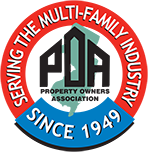The New Jersey Department of Community Affairs (NJDCA) Lead Safe Maintenance in multifamily dwellings may be more painful than chelation injections1 for property owners and managers in New Jersey. The regulation applies to three or more unit dwellings. If you don’t fall into this category, consider yourself lucky. Property owners and managers are now required to presume any painted, shellacked, or otherwise varnished surface in a pre-1978 building contains lead-based paint. Just for having an untested pre-1978 building, property owners and managers are required to pay a multiple dwelling fee (on a sliding scale from $17 to $50, based upon complex size) per unit, for all untested apartments. That means a 500 unit apartment complex will have to pay approximately $10,000 to the State, every five years, just for having an untested pre-1978 building! Further, any on-site maintenance workers or contractors, who might disturb a surface with an unknown lead concentration, are required to be trained in what are known as Lead Safe Work Practices. Property owners and managers will have to pay for this training of their staff and will have to be certain outside contractors are also trained.
What are Lead Safe Work Practices? Lead Safe Work Practices involve using proper containment, proper lead-paint removal or encapsulation techniques, proper cleaning, and dust wipe testing to measure residual lead levels in dust. The federal government has established “clearance” levels for lead in dust, and these levels are so low that even homes without lead-paint have a strong probability of failing2. And if the residual lead in dust is above these “clearance” levels after Lead Safe Work Practices? Re-clean and retest until clearance is achieved, as indicated by laboratory results, before tenants can return to the work area (this applies to both common areas and dwelling units). Lead Safe Work Practices can ultimately cost property owners and managers thousands of dollars, per area, per work event.
What can property managers and owners do about this regulation? Not comply and risk fines, lawsuits, and possible criminal charges. They may comply, pay the fees, train workers, and spend thousands of useless dollars every time they disturb a surface with an unknown lead concentration. Or they may hire a NJDCA Certified Lead Evaluation Firm to conduct a lead-paint inspection using an X-Ray Fluorescent (XRF) instrument.
Many property managers and owners are confused as to what a lead-paint inspection on a multifamily dwelling involves. The federal requirements for a multiple dwelling do not require that every apartment unit be tested in a complex of more than 20 units3. For example, a 100 unit complex built between 1960 and 1978 is required only to test 25 units. If an inspection of these 25 units finds no lead-based paint, the remaining 75 units are presumed to be “lead free”4. This property would qualify for an “interior lead free” exemption from the DCA regulation. That means the property owner and manager would be exempted from paying the per unit fee and from employing Lead Safe Work Practices in the apartment units.
Well, what if the inspection finds lead? Where formerly innocence was bliss and property owners and managers could hand out a pamphlet to tenants and wipe their hands clean, the new regulation presumes that all untested surfaces contain lead anyway. So if lead-paint is found in 7 of the 25 apartment units, under federal regulations, all untested apartments are presumed to contain lead-paint. Which is still no different than if owners and managers hadn’t inspected the 25 units! Why? Because the new regulation presumes everything not tested has lead-paint anyway. Except, now we know that 18 apartment units are “lead free” and therefore no dwelling fee and no lead safe maintenance is required for those apartments, which will ultimately save the owners and managers thousands of dollars.
The good news is that the odds of finding lead-paint on more than 40% of the surfaces in an apartment complex are very low, even in older structures, because years of maintenance and renovations are bound to have removed some of the former lead-paint. The odds are even higher that an untested apartment complex built between 1960 and 1978 has no lead-based paint. Why pay unnecessary fees for the life of a structure? A property certified as “lead free” today will remain “lead free” for the life of the structure. Certainty is the best way a property owner or manager can deal with the DCA Lead Safe Maintenance Regulation. Knowing where the lead-paint is—and more importantly, knowing where it isn’t—is the key to addressing this regulation.
Contributed by Robert Heinze, Senior Staff Scientist for LFR, Inc. located in Brachburg, NJ. He can be reached at (908) 526-1000 or via e-mail Robert.heinze@lfr.com.
